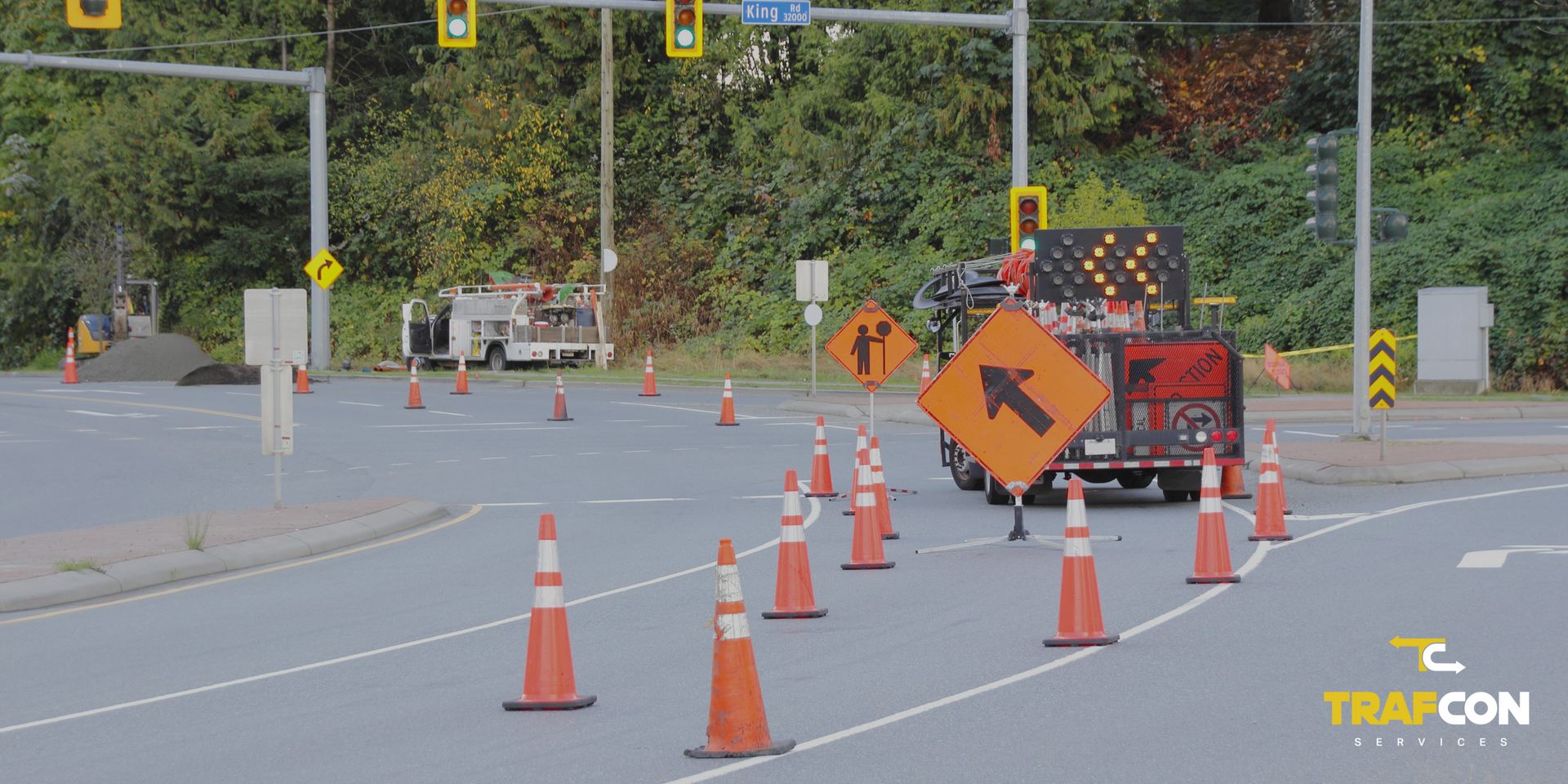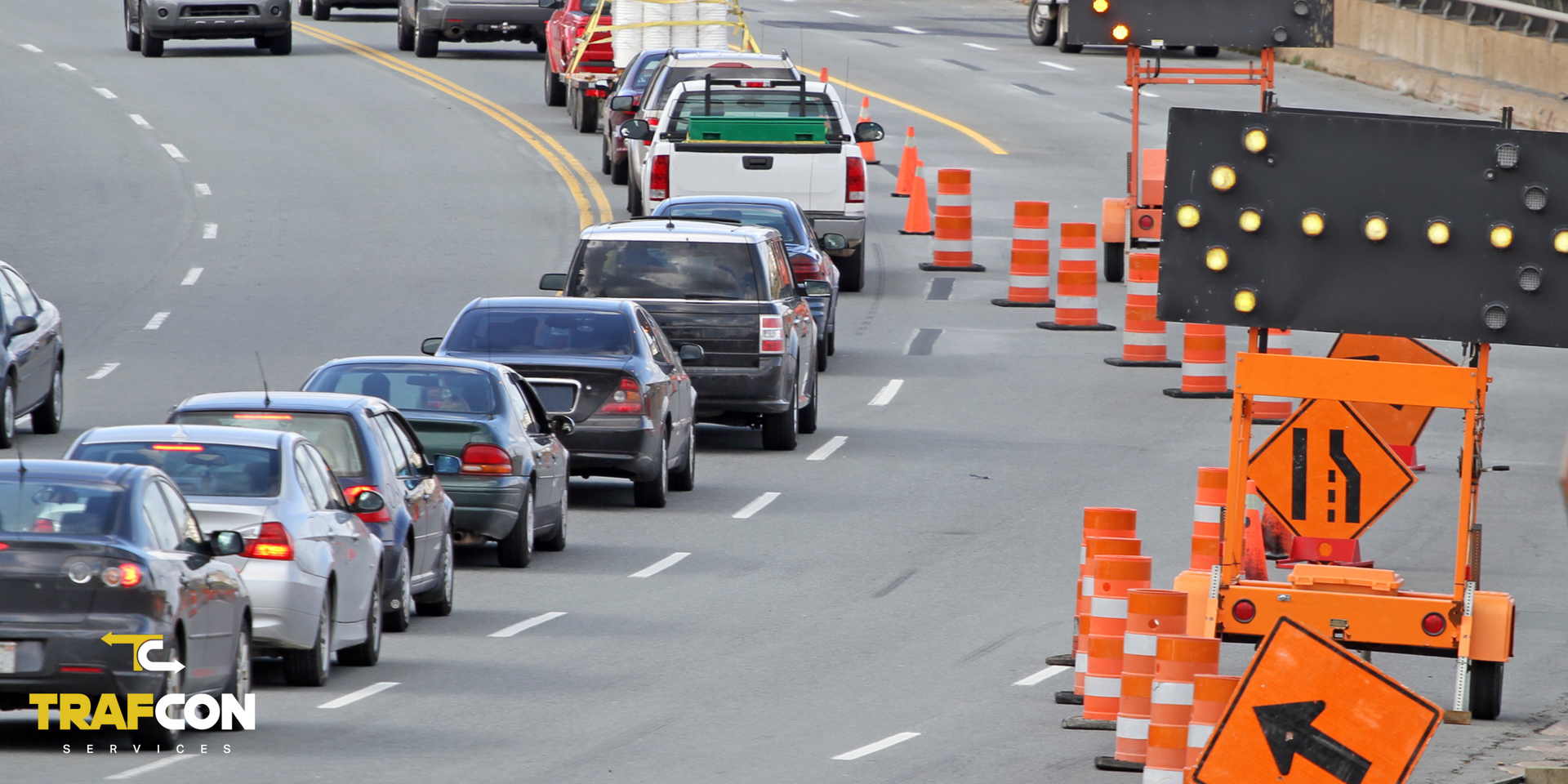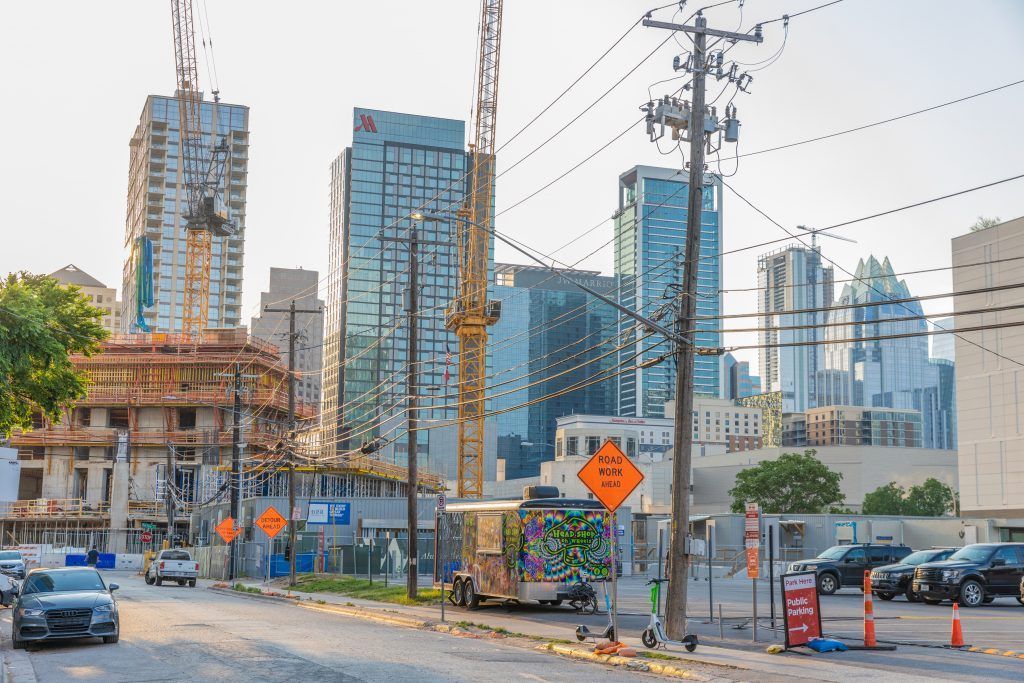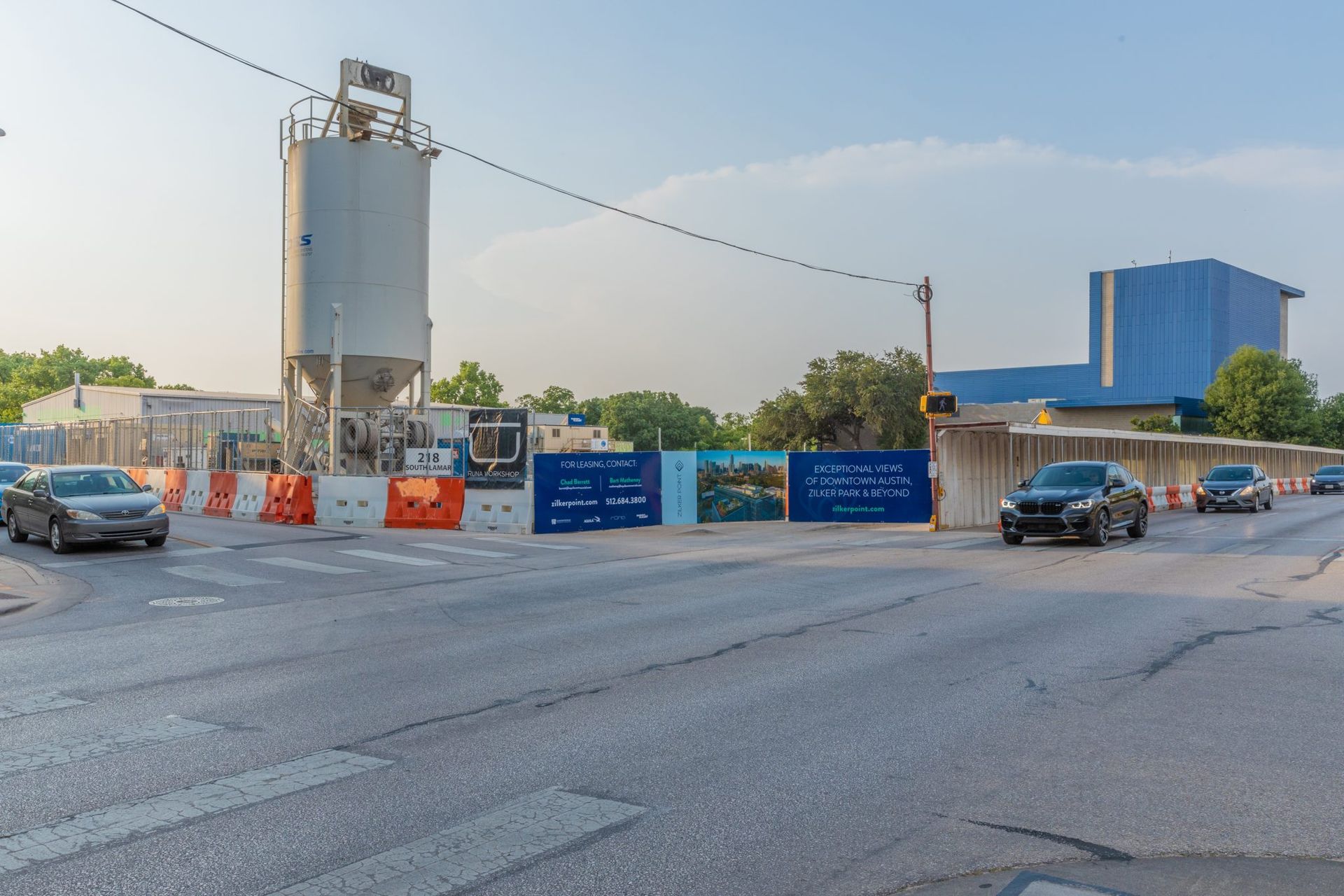Understanding Uniform Traffic Control Devices: Essential Standards for Streets and Highways in Austin Texas

Understanding Uniform Traffic Control Devices: Essential Standards for Streets and Highways in Austin Texas
This article will explain the significance, examples, and usage in Austin, Texas of uniform traffic control devices such as stop signs and traffic signals. These control devices are essential for standardizing road signs throughout the U.S., as outlined in the manual of uniform traffic control devices, assisting motorists in comprehending driving regulations which enhances safety and efficiency on the roads.
Key Takeaways
- Uniform Traffic Control Devices (TCDs) ensure consistency, safety, and efficiency in road systems by providing standardized signals, signs, and pavement markings recognized by all road users.
- The Manual on Uniform Traffic Control Devices (MUTCD) sets national standards for traffic control devices, aiming to enhance road safety by ensuring uniformity in traffic signs, signals, and road surface markings.
- The 11th Edition of the MUTCD introduces significant updates focused on safety, including new designs for electric vehicle charging stations and accessible pedestrian signals, reflecting the evolving transportation industry needs.
- The MUTCD Manual on Uniform Traffic Control Devices is crucial for establishing standards for the installation and maintenance of traffic control devices across public and private roadways, with recent updates by the FHWA affecting road managers and agencies responsible for federal-aid highway projects.
What Are Uniform Traffic Control Devices?
Traffic control devices (TCDs) are the essential components that provide standardization across our roadway systems with consistent signals, signs, and road markings. These elements encompass various instruments such as traffic signals, STOP signs, lane divisions, and areas designated for pedestrian movement.
The Manual on Uniform Traffic Control Devices (MUTCD) defines national standards for the installation and maintenance of various traffic control devices, including highway signs. These standards ensure safety and consistency across public streets and highways.
The primary purpose of these uniform TCDs is to promote safer travel conditions and efficient navigation on thoroughfares. The consistency they offer enables all individuals using the roads—drivers, cyclists or pedestrians—to interpret them uniformly. This harmonized understanding fosters predictable behaviors which are crucial in maintaining order on the streets. Without this standardized approach provided by TCDs, there would be widespread confusion leading to disarray—a scenario where each locale adopts its own unique set of symbols or interpretations for pavement markings simply doesn’t work well.
Notable advantages derived from implementing these standardized measures include:
- Enhanced safety features available to every user of public streets
- Minimization of perplexity thereby reducing incidents
- Facilitation of smoother vehicular progression along with operational improvements
- Communication that’s not only more apparent but also consistently reliable regarding directives and prohibitions
Cities and states leverage these coherent traffic management strategies known as street control devices even when addressing transportation needs within private properties, aiming for an equally safe experience amidst evolving national transport demands.
Thanks to their uniform design and strategic placement alongside our lanes of transit, these items greatly simplify recognition leading to faster processing times during decision-making moments behind wheels or handlebars alike. A fact highly regarded especially within bustling metros like Austin teeming with permanent residents mixed amongst seasonal visitors—all benefiting from a dependable network designed around predictability enforced nationwide by entities including FHWA who maintain steadfast in advocating the impactfulness such leveled application holds upon optimally functioning transits coupled hand-in-hand with enhanced safeguards throughout pathways traversed daily.
Standardizing TCDs contributes significantly not just toward unification among different jurisdictions but most importantly boosts overall security present at crossroads encountered through journeys made anywhere applicable while simultaneously contributing positively against gridlock occurrences directly affecting urban centers densely populated thus making it imperative we respect what’s been established serving as preventive mechanisms aligned perfectly versus probable hazard scenarios ensuring continual flow possible thanks to universally understood indicators & markers enshrined universally without exception accommodating everyone inclusive irrespective geographical contextuality underscoring why fostering conformity via regulatory delineations permits accident risk minimizations henceforward preserving orderly streams comprised singularly yet collectively advancing forward motion consistently no matter traveled location continent wide.
The Purpose and Importance of MUTCD
The Manual on Uniform Traffic Control Devices for Streets and Highways (MUTCD), also known as the MUTCD manual, serves as the foundation for traffic management across America. Created by the Federal Highway Administration (FHWA), this manual outlines how to design, implement, and utilize various signs, markings on the road surface, and signals—key elements that facilitate coherent nationwide traffic control.
By providing a set of national standards for these devices, the MUTCD helps create an environment where all users of roads can recognize familiar signals and markers swiftly. This consistent familiarity is vital not merely from a visual standpoint, but more importantly from a safety perspective. It allows travelers to make timely decisions while navigating streets, which in turn mitigates accident risks. Central to its mission is human-focused design—as articulated within its definitions—the MUTCD prioritizes consideration towards those using roads daily.
To ensure continuous transportation safety efficiency, compliance with established guidelines detailed in the MUTCD. The role of maintaining this cohesion falls under FHWA’s administration who updates these criteria periodically thereby reflecting changes needed due to ongoing developments in transportational operations or technologies’ evolution—a practice sustained through their latest iteration present in 11th edition form demonstrating commitment toward setting benchmarks followed by our nation’s roadway managers when implementing such essential controls.
Emphasizing uniformity crafted via regulations found within national MUTCD holds paramount importance given its contribution toward diminishing confusion among drivers aiding heightened vigilance plus improving thoroughfare efficiencies irrespective if one drives amidst urban core chaos or serene rural paths—and thanks profoundly so that each journey regardless location anticipates what lies ahead securely guided throughout their travel aided by regulated instruction sets embedded inherently inside every single command outlined mandated firmly through directives issued therein ensuring safe passage ubiquitously experienced anywhere en route
Key Components of Traffic Control Devices in Austin, Texas
In Austin, Texas, traffic control devices are crucial for maintaining the safety and flow of roadways. These devices consist of various signs such as regulatory, warning, and guide signs, which all play a unique role in directing and alerting those using the roads to ensure their safe travel throughout the city.
Road managers follow the Manual on Uniform Traffic Control Devices (MUTCD) to install and maintain these traffic control systems, ensuring compliance with updated regulations to meet evolving safety and traffic management needs.
Regulatory signs serve to communicate specific rules and regulations on traffic like speed limits or no-turn orders to motorists. Warning signs act as an early notification system for drivers about imminent hazards or shifts in driving conditions that lie ahead. Guide signs help by offering directions along with how far away destinations are located. The collective operation of these controls forms an extensive system essential for fostering secure and efficient transportation across Austin’s streets.
Regulatory Signs
Regulatory signs play a critical role in communicating traffic laws and directions to road users, ensuring adherence to established roadway rules. STOP signs serve as an essential example of this signage type. They are required to have an octagonal shape with a white inscription and border set against a red backdrop for quick identification from afar.
Such regulatory signs typically take on rectangular shapes with vertical orientation longer than their horizontal aspect, including those that indicate speed limits or prohibit parking. They are carefully installed at key locations to offer direct and unambiguous guidance to motorists. This helps manage vehicle flow and promotes safer travel environments. The Manual on Uniform Traffic Control Devices (MUTCD) is instrumental in normalizing these sign designs and placements so that drivers can instantly recognize them, which facilitates compliance across different regions. The MUTCD also applies to private roads that are open to public travel, ensuring uniformity and safety across all types of roadways.
Within Austin’s comprehensive traffic management framework, regulatory signs stand out as fundamental elements guiding orderliness along streets by averting mishaps and supporting smooth navigation for all who traverse the roads. Guidance regarding these crucial regulatory sings is sustained through directives issued within the federal register.
Warning Signs
Warning signs play a crucial role by warning motorists about possible dangers or alterations in the conditions of the roadway ahead. Their purpose is to provide adequate warning, enabling drivers to adapt their driving accordingly to maintain safety.
Under the guidelines of the MUTCD, typical warning signs address concerns such as sudden curves, wildlife crossing areas, and zones near schools. Such warnings are strategically placed in locations requiring heightened vigilance from motorists, including regions around educational institutions, construction sites or areas known for animal migration. By drawing attention to these specific risks on roadways, warning signs contribute significantly to averting mishaps and fostering safer driving practices.
In Austin specifically, warning signs form an integral part of traffic control mechanisms that assist vehicle operators in foreseeing and reacting timely to variable street environments thus augmenting safety for all who travel on public roads.
Guide Signs
Navigation signs play a crucial role in directing travelers to their desired locations, and include:
- Guides indicating directions and distances to cities
- Information on how to reach towns
- Signage pointing toward significant landmarks
- Markers showing the way to various attractions
These indicators are crafted for easy comprehension, offering straightforward details that support effective route planning.
In the city of Austin, navigation markers are deliberately positioned to facilitate movement through its streets. These signals ensure that whether one is familiar with the area or visiting for the first time, locating principal sites like Austin-Bergstrom International Airport, University of Texas campus or Zilker Park becomes a less daunting task. The clarity and uniformity provided by these signs aim at enhancing driving conditions while diminishing challenges associated with traversing new territories.
Also referred to as traffic signals within highway systems, such navigational signage forms an essential component of traffic control measures. Together with highway traffic signals, they form a coherent system designed to improve ease of travel for all who use the roads.
Recent Updates in the 11th Edition of MUTCD
The MUTCD’s 11th Edition, issued in December 2023, incorporates numerous critical updates to meet the changing demands of the transportation sector. Presented exclusively as a PDF document, this new edition introduces redesigned traffic control devices, revised standards and prioritizes safety for vulnerable road users.
These updates reflect the nation's changing transportation needs, addressing evolving technologies and enhancing safety measures.
A principal feature of this latest edition is its dedication to a ‘safe systems’ methodology aimed at minimizing crash risks and improving overall roadway safety by integrating new safety technologies. This strategy accounts for interactions among various elements: road users, vehicles and infrastructure alike, fostering comprehensive traffic management solutions.
In response to the accelerating shift towards sustainable mobility solutions such as electric vehicles (EVs), the newly released edition includes signage options specifically designed for EV charging stations. It establishes updated guidelines concerning warning signs that alert drivers about upcoming changes in horizontal alignment. These ensure clarity and precision within driver notifications.
Amongst significant advancements detailed in this update are standardized requirements pertaining to accessible pedestrian signals (APS) which must now be incorporated with all pedestrian crossing indicators including those governed by pretimed or non-actuated signal methods – thereby guaranteeing safer passage for individuals with disabilities across intersections equipped with push buttons.
Finally, addressing an era marked by burgeoning advancements in vehicle automation technology—and highlighting their increased prevalence—the 11th Edition puts forth Part 5 titled ‘Automated Vehicles’. It offers guidance on adapting existing agencies’ considerations regarding automated vehicle innovations ensuring compatibility between AV functionalities and established traffic control measures.
Implementing Traffic Control Devices: Best Practices in Travis County
Travis County adheres to a set of best practices when deploying traffic control devices, which emphasize the importance of visibility, legibility, and functionality. These strategies are crucial for augmenting road safety and providing unambiguous instructions to all users navigating the roads.
To ensure safety and consistency in traffic management, it is essential to maintain traffic control devices according to the standards set by the Manual on Uniform Traffic Control Devices (MUTCD).
A central tenet in the design process is ensuring that these control devices stand out clearly regardless of whether it’s day or night. To achieve this objective, proper sizing, shaping, choice of colors, and lighting must be considered so that every sign and signal captures attention effectively while delivering its intended message without ambiguity.
Guidelines for crafting warning signs call for:
- Adequate signals alerting about impending road conditions
- Utilizing striking color contrasts to enhance sign prominence
- Employing succinct language to articulate messages efficiently
- Strategically positioning signs ahead of potential hazards
- Guarantee noise-free surroundings by keeping sightlines free from blockages like foliage
Adhering strictly to such guidelines empowers warning signs with the capability to relay critical information regarding roadway states timely enough for motorists’ reaction toward maintaining their own security.
In Travis County, as well, routine scrutiny is vital in discerning if updates on existing traffic control mechanisms are warranted based upon evolving vehicular dynamics. Such ongoing evaluations secure sustained effectiveness plus relevancy within this infrastructure framework. Preservation efforts aimed at sustaining device readability together with conspicuousness also hold significant weight.
Endorsed among these optimal approaches is the elimination procedures concerning redundant apparatus pertaining to traffic regulation – once recognized devoid of any longer serviceable purpose, should then be dismantled notwithstanding operational physical stature they might preserve – doing away facilitates decongestion street-wise plus precludes over-stimulation brought on through excessive visual stimuli derived via dense signage along pathways frequented by commuters.
Costs and Benefits of Adopting MUTCD Standards
While the adoption of MUTCD standards incurs certain costs, the benefits derived greatly surpass these expenses. The estimated total costs of the substantive revisions in 2020 dollars are $59.7 million when discounted to 2020 at 7 percent. While this figure may seem significant, the operational benefits and improved road safety justify the investment.
Road managers nationwide play a crucial role in implementing and maintaining traffic control devices as defined by the Manual on Uniform Traffic Control Devices (MUTCD).
One of the primary benefits of adopting MUTCD standards is enhanced road safety. By ensuring that traffic control devices are consistent and comprehensible, these standards:
- Save lives
- Improve overall traffic flow
- Lead to fewer road incidents
- Reduce the likelihood of accidents
- Reduce the economic costs associated with accidents.
Additionally, complying with MUTCD standards protects transportation agencies from liability. When agencies adhere to these national standards, they can demonstrate that they are following best practices, reducing the risk of legal challenges and potential damages.
Overall, the costs of implementing MUTCD standards are a worthwhile investment, leading to safer roads, improved traffic management, and reduced liability for transportation agencies.
Case Study: Austin’s Approach to Traffic Control
The traffic control strategy employed in Austin is grounded in rigid adherence to both the Texas Manual on Uniform Traffic Control Devices and the City of Austin Transportation Criteria Manual. Adhering to these guides ensures uniformity and safety throughout the network of roads within Austin.
In line with this, all Traffic Control Plans (TCPs) operative in Austin are required to be consistent with these reference manuals as they are crucial for managing right of way work zones effectively. The city has formulated engineered TCPs along with specific and standard designs for handling traffic control, which help navigate road users safely around construction sites and other active roadwork areas.
When it comes to developing Engineered TCPs in Austin, they must be crafted by a professional engineer before undergoing approval from a ROW TCP Reviewer. This process guarantees that each plan upholds stringent standards of security and functionality.
Specializing specifically within temporary traffic control design and advisory services primarily catering to clients based in or near Austin, TrafCon Services—a leading name known for their extensive focus on this discipline—guides clients through comprehending procedural requirements laid out by Austin's Right of Way Management Approval Network (ROWMAN), ensuring full compliance while maximizing efficacy.
TrafCon Services offers invaluable assistance rooted deeply into its local market expertise making them an essential ally for businesses as well entities engaged in contracting within metropolitan boundaries surrounding Austins’ precinct including:
- Development planning & designing protocols governing vehicle management.
- Renting various contraptions used during directing vehicular movement.
- Supply provisions necessary when employing flagging personnel at site locations directing flow patterns appropriately.
- Programs designed towards fostering certification/training aptitude among staff responsible overseeing direct operational aspects involving area specific transportation modulation initiatives underway across different site locales earmarked under public jurisdiction coverage zones
Ensuring every aspect related to implementations concerning regulation procedures associated with conveyance activity occurs without hiccup ranks among Trafcon Services’ assurance commitments delivered unwaveringly upon engagement initiations extended clienteles seeking partnership forms supporting ventures planned setting forth parameters benefitting civic communal welfare collectively shared amongst populace demographics spanning geographical terrains concerned thereof.
How TrafCon Services Can Help
Based in Austin, Texas, TrafCon Services stands out as a premier traffic control design and consulting organization offering an extensive range of tailored services to meet the distinct demands of its clientele. Their areas of specialization include:
- The design for controlling traffic
- ROW consultative support
- Aid with securing permits
- Coordination of special events
The firm ensures that each measure related to controlling the flow of vehicles is meticulously planned and implemented. TrafCon Services utilizes advanced traffic control tools as defined by the Manual on Uniform Traffic Control Devices (MUTCD) to maintain safety and manage traffic flow effectively.
With a strong emphasis on traffic management techniques and utilizing various tools meant for managing vehicular movement,
TrafCon Services provides essential services such as:
- Crafting short-term plans aimed at regulating vehicle flow which prioritize both project needs and safety measures
- Guaranteeing secure operation within work zones
- Hosting discussions on-site to go over detailed project information along with site-related logistics
- Delivering tailor-made solutions geared towards tackling specific challenges linked to individual projects
Another pivotal area where TrafCon Services excels is in assisting clients through the process required for obtaining Right-of-Way (ROW) permits efficiently.
- Steering through mandatory regulations
- Deciding if existing standard details suffice or whether there’s a need for bespoke planning
- Managing all aspects involved in acquiring these permits
By engaging their expertise, TrafCon eases this complex procedure so clients can acquire necessary authorizations smoothly.
In coordinating special occasions like festivals or significant university gatherings, collaboration between event coordinators, city officials, and patrons is fundamental. During such events—ranging from concerts at Zilker Park to large-scale happenings at the University of Texas—TrafCon Services plays an integral role by confirming appropriate controls are deployed effectively aiding crowd management while also ensuring overall public security.
Having earned renown as top-tier experts within the domain of designing systems dedicated to monitoring road activity alongside handling permit processes around Austin including neighboring districts,TraFcon’s devotion toward delivering superior quality service positions them as leaders when it comes to transportation regulatory strategy consultancy. To organize a complimentary initial assessment onsite, please reach out via phone: (512) 994 –7830.
Summary
Traffic control devices (TCDs) play a vital role in ensuring the safe and orderly movement of road users by providing consistent and clear guidance. The guidelines for these uniform traffic control devices are outlined in the Manual on Uniform Traffic Control Devices (MUTCD), which promotes national standardization. In Austin, Texas, this includes the use of regulatory signs, warning signs, and guide signs that contribute to enhanced safety for all travelers.
By adhering to MUTCD’s standards like those implemented in Austin, there is an improvement in roadway safety as well as minimized liability risks for transport authorities. TrafCon Services exemplifies how adherence to uniform traffic guidelines can be accomplished effectively.
Offering specialized services including traffic control design solutions, consulting services related to permitting processes along with assistance during special events makes them a leading provider within Austin’s jurisdictional reach.
For comprehensive support regarding your project’s need for compliant traffic control measures, contact Treated Services at (512) 994-7830 today, they provide complimentary site visits ensuring tailored expertise is just a phone call away.
Frequently Asked Questions
What does TrafCon Services provide in terms of traffic control consulting?
TrafCon Services offers extensive assistance for every aspect of their clients’ traffic control requirements. They ensure a secure and efficient work zone by conducting on-site meetings that assess the details and logistical considerations of the project.
What assistance does TrafCon Services provide for obtaining ROW permits?
TrafCon Services provides essential support in acquiring Right-of-Way (ROW) permits, both by identifying typical specifications or devising bespoke plans as necessary, and overseeing the complete permitting process on behalf of their clients.
How does TrafCon Services collaborate with event planners for special events?
TrafCon Services works in partnership with event organizers, municipal staff, and various clients to guarantee the smooth execution of projects while prioritizing the safety aspects during events.
This joint effort is crucial for establishing an environment that is both secure and effective for hosting special events.
What services does TrafCon Services offer?
TrafCon Services provides a range of services including the design of traffic control systems, consultation on traffic control and Right-of-Way (ROW) fees, support with obtaining permits, and assistance for special events related to managing vehicular flow.
How can I contact TrafCon Services for a site walk?
You can contact TrafCon Services for a site walk by calling (512) 994-7830.
SHARING IS CARING
New Paragraph











